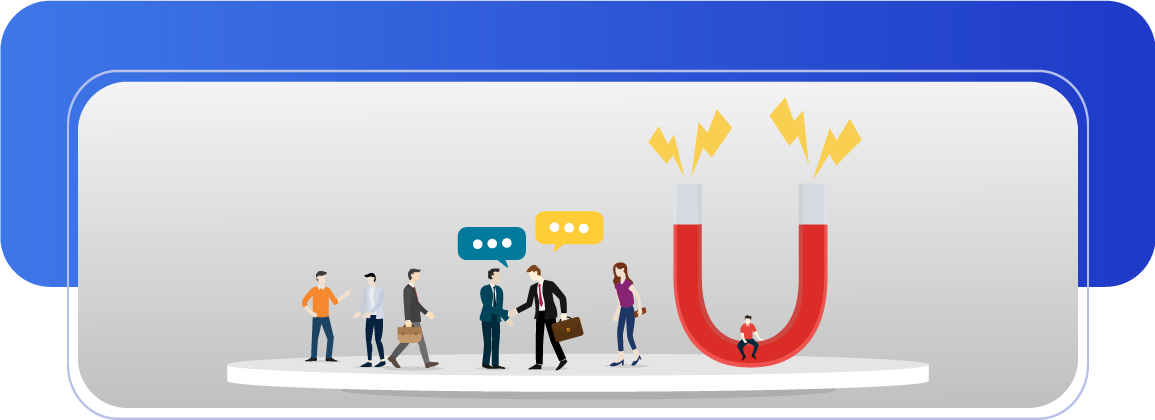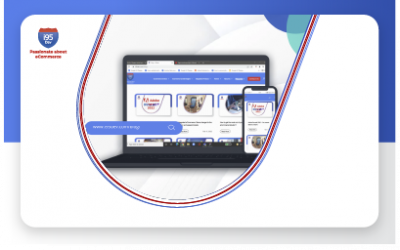Customer Retention – Definition,
Strategies, and Metrics

What is customer retention?
Customer retention is the rate at which a business can retain its paying customers over a given time period. It is significant for any growing company as it measures how successful they are at satisfying existing customers and acquiring new ones.
Why should you have a customer retention strategy?
There is a widespread notion that customer retention is important simply because it reduces the number of customers you lose. However, having a sound retention strategy in place helps you grow your business exponentially by generating loyal customers and building lifelong customer relationships.
A research report by Price Intelligently stated that a 1 percent increase in customer acquisition impacts your bottom line by 3.3 percent. On the other hand, if you improve your customer retention rate by 1 percent, your bottom line increases by 7 percent. In other words, retention has the capacity of being twice as instrumental as customer acquisition.
Let us have a look at the key strategies of customer retention:
- Personalize the customer experience – It is a proven fact that most big companies have attained success because they put their customers first. While good customer experience plays a significant role in B2C business, in the B2B world, companies often deal directly with clients, thereby making customer personalization crucial. Any business will profit if they have streamlined operations and are able to save time and money. You cannot achieve this without integrating business processes seamlessly. In order to create an excellent customer experience, you will need an integrated eCommerce solution that unifies processes such as warehouse distribution, product catalogs, payment services, and others into a centralized, easily accessible system.
While unifying back-end operations do create an impact on customer experience, to make loyal customers, your front-end operations marketing and sales services should be up to the mark. For this, you may want to try out headless commerce solutions that separate front-end operations from the back-end so that you can easily adapt sales initiatives while concentrating on improving customer experience.
Want to know how to create personalized experiences that truly connect with your customers?
- Integrate ERP and CRM systems – The customer relationship management system (CRM) is the heart of all customer retention strategies. These systems store all customer information, conversations, transaction history, and more in a single platform. Integrating ERP systems with CRM gives you access to a central database of all the existing and potential customers. It helps you serve your customers swiftly and accurately, thereby increasing customer satisfaction.
- Organize Orders and Inventory – Companies that want to increase customer retention rates have to efficiently carry out their order and inventory management. You may permanently lose a customer if you repeatedly fail to provide them with the products they are looking for.
ERP integrated systems have all kinds of order and inventory management features such as stock tracking and management, multi-channel order fulfillment, sales and purchase order management, B2B eCommerce functionality, warehouse management, and stock transfers, and others.
Customer retention metrics
Now that you know the key strategies, you should know how to calculate the outcome after they are implemented.
Customer retention metrics help you to measure the outcome of the efforts you are putting in to retain customers. Here are five useful customer retention metrics:
- Churn rate – It helps you measure how many customers were lost and the total value of the recurring business that was lost with them.
To measure the churn rate for the customers lost, you have to divide the number of customers you lost last quarter by the number of customers you started with this quarter.
To measure the churn rate for the total value of recurring business lost, you have to replace the numbers with your monthly recurring revenue at the beginning of the month (MRR) divided by your MRR lost at that month’s end.
- Repeat purchase rate – It shows what percentage of your customers return to buy. The repeat purchase rate metric provides a fair idea of the value a company provides its customers. To measure it, divide the number of customers who purchased more than once by the total number of customers in a given time period.
- Purchase frequency – It shows you the average number of times a customer makes a purchase in a given time period. To measure the purchase frequency, divide the number of orders by the number of unique customers in a given time period. It provides a company with knowledge of how frequently the customers engage with them. The higher the number, the better you are at retaining your customers.
- Average order value – It measures the total amount of money typically spent each time a customer makes a purchase. To calculate the average order value, divide the total revenue by the total number of orders. It showcases how impactful your marketing strategy is.
- Customer lifetime value (CLV) – In simple terms, customer lifetime value can be measured as customer revenue minus the costs involved in acquiring and serving the customer. This provides you with the total worth of a customer over the duration of their relationship with you so far and beyond.
Wrapping it up
We all know that improving customer retention doesn’t happen within a flash. Instead, it is an ongoing process that is purely based on the level of trust you build with your customers.
Providing a seamless customer experience is the key. And to do so, all you need is a robust eCommerce platform- integration with your ERP system or a 360-degree Integrated eCommerce solution.
Contact us now to improve customer retention!
Ready to unlock the key to enhancing customer experience and maximizing your business potential?
Recent Blogs
22 benefits ecommerce home decor furniture businesses
22 Benefits of eCommerce for Home Décor and Furniture Businesses Author Category Share Home décor and furniture businesses are increasingly turning to eCommerce to elevate their operations...
Home Improvement Industry: 11 Key eCommerce Features Consider
Elevating Home Improvement eCommerce: 11 Must-Have Features for a Seamless Shopping Experience Author Category Share In the dynamic landscape of home improvement, furniture, and lifestyle,...
Complete Guide to Automotive eCommerce Growth, Trends, Challenges, Solutions
A Comprehensive Guide to Accelerate Your Automotive Business Growth with eCommerce Author Category Share Introduction The automotive industry has undergone a significant transformation in...



